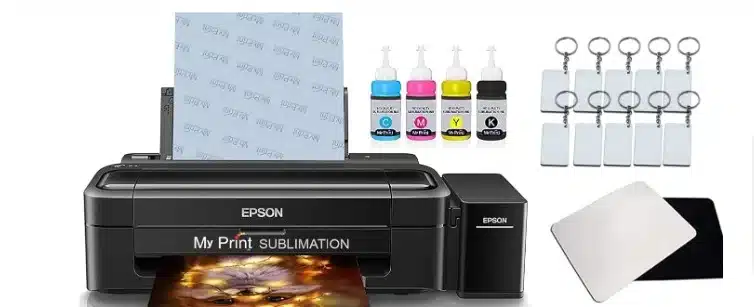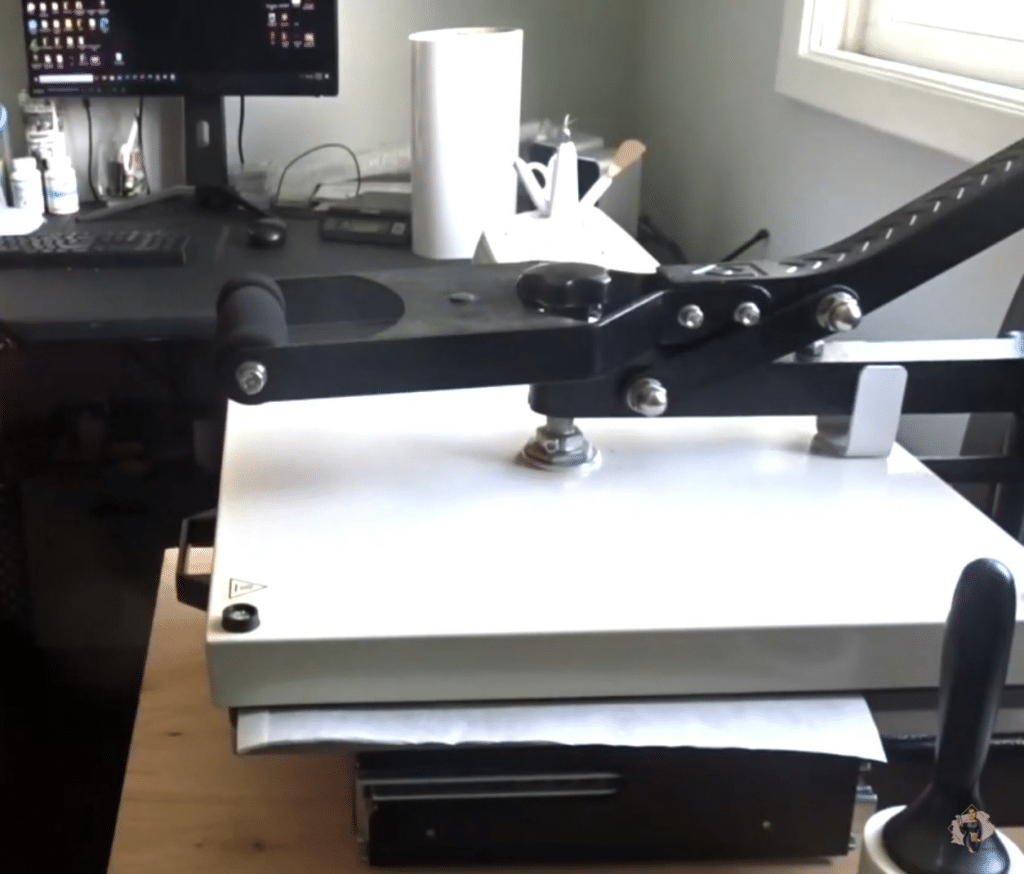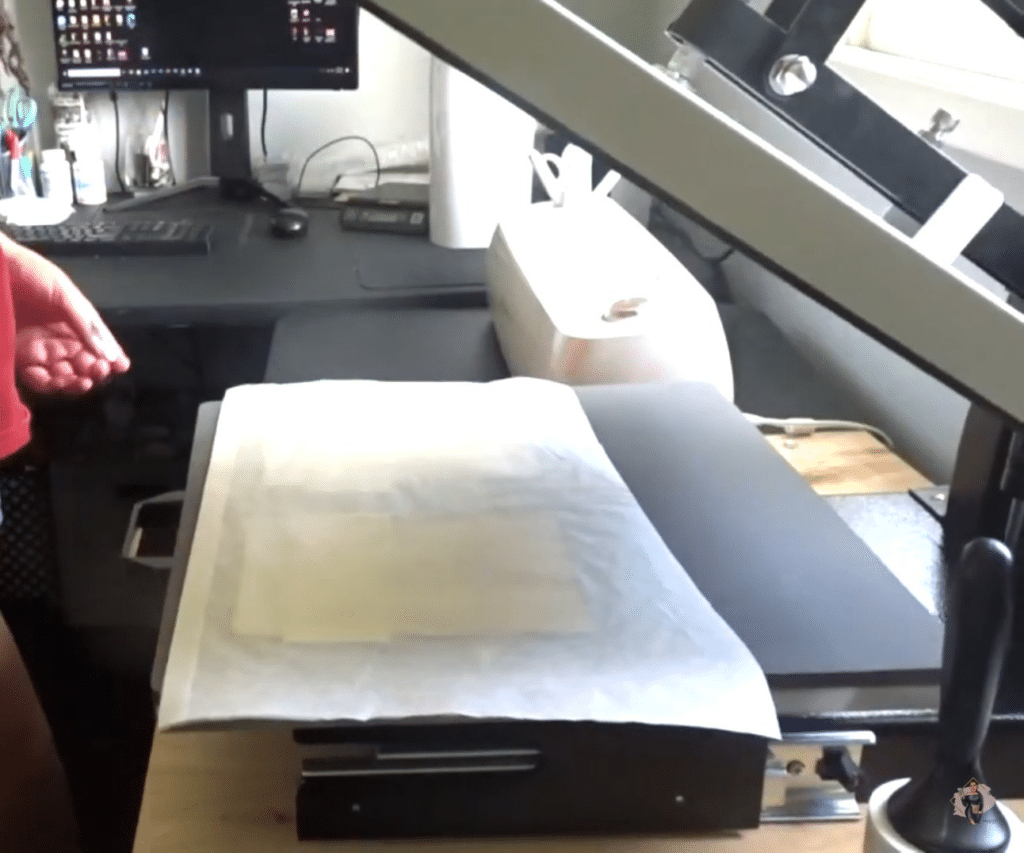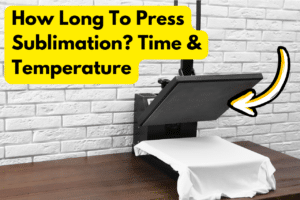Have you ever wanted to add a personal touch to your satin garments or accessories?
Maybe you’ve seen others with beautiful designs on their satin pieces and wondered how they did it.
Well, we’ve got the answer for you!
In this article, we’re going to explore ‘Can you sublimate on satin?’. We’ll also discuss the challenges that come with this type of fabric and provide step-by-step instructions on how to sublimate on satin successfully.
Plus, we’ve got some handy tips and tricks to help you achieve the best results.
So, let’s get started!
you may also like
- Can You Sublimate on Viscose? (Answered!)
- Can You Remove Sublimation Ink from Different Blanks?
- Can You Sublimate on Burlap Products?
- Can You Sublimate On Plastic? (Explained!)
Can You Sublimate on Satin?
Yes, you can sublimate on satin. Sublimation works best on fabrics with a high polyester content, and satin is no exception. If your satin fabric is 100% polyester, you’re good to go!
However, if it’s a blend with other fibers like cotton or silk, the sublimation process might not work as effectively.

Satin is a luxurious fabric known for its smooth, lustrous surface and drape. While it’s primarily made from polyester fibers, it can also be woven from other materials like silk or a blend of fibers.
When it comes to sublimation printing, the key factor is the polyester content. The higher the polyester percentage, the better the results you can achieve with sublimation.
Despite its suitability, sublimating on satin comes with a few hurdles:
- Smearing: The slippery texture might cause the ink to smear during the heat press process if not handled carefully.
- Reduced Vibrancy: Satin’s smooth surface can make it harder for the ink to fully adhere, resulting in slightly muted or less vivid colors compared to rougher polyester fabrics.
How to Sublimate on Satin
Below is a step-by-step guide that you can use to successfully sublimate on satin:
1. Prepare Your Materials
Gather your satin fabric, sublimation printer, sublimation ink, transfer paper, and a heat press machine.

Before you begin the sublimation process, it’s crucial to have all the necessary materials on hand.
You’ll need a high-quality satin fabric made of 100% polyester or with a high polyester content, a sublimation printer capable of printing vibrant designs, sublimation inks specifically designed for polyester fabrics, and compatible transfer paper.
2. Print Your Design
Use your sublimation printer and high-quality sublimation ink to print your design onto the transfer paper.

It’s important to use high-quality sublimation inks specifically formulated for polyester fabrics, as these inks are designed to effectively sublimate and bond with the polyester molecules.
When printing your design, ensure that your printer settings are optimized for sublimation printing, including the correct color profiles and print resolution.
3. Set Up the Heat Press
Consult your heat press manual and set the recommended temperature and pressure for satin fabrics.

Before you begin the heat press process, it’s crucial to consult your heat press manual and set the appropriate temperature and pressure settings for sublimating on satin fabric.
Every heat press and fabric type may have slightly different recommended settings, so it’s important to follow the manufacturer’s guidelines.
4. Position the Fabric
Place the satin fabric on the heat press lower platen, and position the transfer paper with the printed side facing down onto the fabric.
Once your heat press is set up with the correct temperature and pressure settings, it’s time to position the satin fabric and transfer paper.

Next, carefully position the transfer paper with the printed side facing down onto the satin fabric. Ensure that the transfer paper is aligned correctly with the fabric, and there are no air bubbles or wrinkles between the two surfaces.
5. Heat Press
Apply light to medium pressure and press according to the recommended time and temperature settings.
The temperature setting should be within the recommended range for polyester fabrics, typically between 375°F to 400°F (190°C to 204°C).

With the satin fabric and transfer paper in position, it’s time to apply the heat press. Gently lower the upper plate of the heat press, applying light to medium pressure.
Avoid excessive pressure, as this can cause the ink to smear or the satin fabric to stretch or distort.
6. Cool Down
After the recommended press time has elapsed, resist the temptation to immediately separate the transfer paper from the satin fabric. It’s crucial to allow the fabric and transfer paper to cool down completely before attempting to remove the paper.

Separating the transfer paper while the fabric is still hot can cause the ink to smear or shift, ruining your design.
Be patient and allow the materials to reach a safe handling temperature before proceeding to the next step.
7. Peel Off the Paper
Carefully peel off the transfer paper to reveal your sublimated design on the satin fabric.

Once the satin fabric and transfer paper have cooled down sufficiently, it’s time to carefully peel off the transfer paper.
Start from one corner and slowly peel the paper away from the fabric, taking care not to cause any shifting or smearing of the design.
Tips for Successfully Sublimating on Satin
Below are a few tips that can help you successfully sublimate on satin:
frequently asked questions
Below are a few frequently asked questions to help you further:
What Fabric Can You Not Sublimate On?
Sublimation works best on polyester fabrics or blends with a high polyester content. Natural fibers like cotton, linen, or silk are generally not suitable for sublimation printing.
Can You Sublimate on Silk Fabric?
Unfortunately, traditional sublimation inks and processes are not compatible with silk fabrics. Silk is a natural fiber that won’t effectively absorb and hold the sublimation inks.
Can You Sublimate on Satin Ribbon?
Yes, you can sublimate on the satin ribbon as long as it’s made of 100% polyester or has a high polyester content.
The same principles and techniques for sublimating on satin fabric apply to satin ribbon as well.
Wrapping Up
In this article, we’ve learned that while it’s possible to sublimate on satin fabric, it requires some extra care and attention due to the fabric’s smooth and slippery texture.
By following the step-by-step guide, using high-quality materials, and implementing the tips we discussed, you can achieve stunning and long-lasting results on your satin projects.
Whether you’re creating personalized satin garments, accessories, or home decor items, the possibilities are endless when you master the art of satin sublimation.
Remember, sublimating on satin might take some practice, but don’t be discouraged. Keep experimenting with different techniques and materials until you find the perfect combination that works best for your projects.




